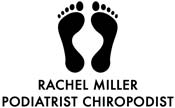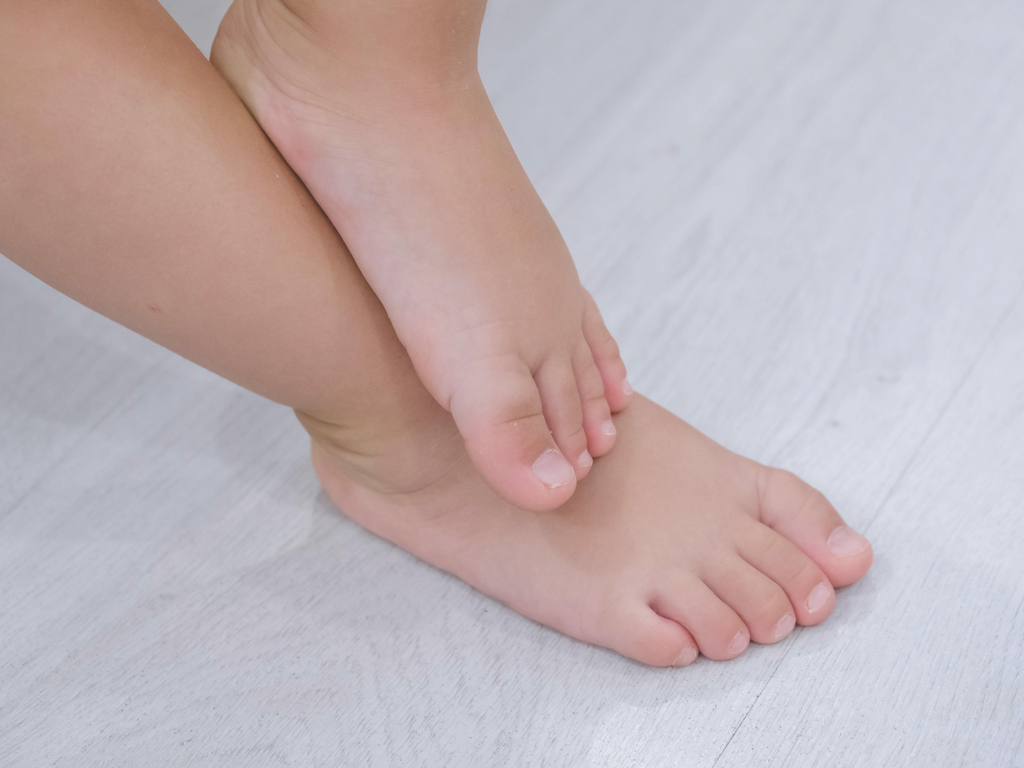Flat Feet in Adults and Children
Flat Feet (pes planus) – We are born with flat feet and then arches, a gap beneath the inner part of the foot, usually begin to develop at around 3 years old.
Flat feet or fallen arches is a condition when you have a low arch or no arch when your foot makes contact with the ground. Flat feet can either be congenital, you are born with the condition or it can be acquired, they develop from perhaps injury, illness or wear and tear. Flat feet mostly cause no problems and do not need treatment.
If you or your child are getting painful feet or legs, have ankle problems, tiredness or perhaps awkwardness walking or clumsiness playing, then it can be helpful to have an assessment from an experienced podiatrist.
Rachel Miller is a highly experienced podiatrist who sees many adults and children with flat feet. Please see below if you want more detailed explanation of flat feet.
Contact the clinic for an appointment on 020 8348 5553
Flat Feet in Adults and Children
Flat feet (pes planus) in children are often divided into two types, flexible and rigid. Flexible flat feet are the most common type, you can see an arch when there is no weight on the foot but the arch disappears when putting weight on it. Most children grow out of this condition with no symptoms.
A rigid flat foot is rarer; even when there is no weight put on the foot there is no arch. This condition often develops during teen years and can be painful needing treatment.
Adult acquired flatfoot, when the arch drops or collapses, sometimes is referred to as hyperpronation or overpronation. Overpronation, when your foot rolls inward toward the arch excessively during gait, can be painful and may cause stresses and strains increasing your susceptibility to various conditions. Athletes with overpronation, particularly runners, may see an increased likelihood of developing overuse injuries and sprains. Flat feet also can occur in people whose feet do not over-pronate.
Symptoms of flat feet
Children can complain of pain or tenderness in the foot, leg or knee and parents may notice an outward tilting of the heel, some awkwardness or tiredness when playing or difficulty with shoes.
Symptoms of flat feet can include:
- redness, swelling and pain
- painful or achy feet, especially in the areas of the arches and heels
- stiffness
- numbness
- problems with balance
- feet tire easily
- the bottom of your feet become swollen
- leg, knee, hip, lower back pain
- easily injure your feet or ankle
A flat foot can occur in one foot.
Flat feet can exacerbate other foot problems such as:
- Plantar fasciitis – Pain at the bottom of your heel or your arch, sometimes described as an overuse injury.
- Stress fractures – Tiny cracks often caused by repetitive forces through the bone due to intense exercise.
- Achilles tendinopathy – A common overuse repetitive injury causing heel pain.
- Patellofemoral pain syndrome – Pain in and around the kneecap.
- Bunions – lump that forms on the side of your big toe joint causing your toe to bend inwards and the joint to jut out. A bunion can press against shoes putting pressure on the joint, which can become inflamed, stiff and painful.
Causes of flat feet
Flat feet can be congenital or acquired. Congenital flat feet means you are born with or have an hereditary predisposition to having flat feet. Flat feet typically runs in families. Ethnicity can be an important element whether you have flat feet and some ethnic groups are born with a susceptibility to acquiring flat feet.
Flat feet can be part of such conditions as:
- Down syndrome
- Marfan
- Ehlers Danos
- spina bifida
- cerebral palsy
- muscular dystrophy
Flat feet can progress slowly as you increase your foot’s exposure to weight-bearing activities. Repetitive high impact sports, such as running and football, can also be a factor.
Posterior tibial tendon dysfunction – PTTD is sometimes called adult acquired flatfoot as it is the most common type of acquired flatfoot developed during adulthood. The tibialis posterior is a muscle in the lower leg. The tendon from this muscle runs behind the inside bone on the ankle, under the instep, and attaches under the sole of the foot. This important muscle helps to hold the arch of the foot up. Sometimes, the tendon becomes stretched and inflamed due to overuse or injury, impairing its ability to support the arch causing flat feet. Symptoms can begin with pain on the inside of the foot and ankle and later as the condition progresses and the foot flattens, pain can move to the outside of the foot, below the ankle. Arthritis can develop in the foot and ankle as well.
Risk factors for acquiring flat feet include:
- obesity
- diabetes
- aging
- pregnancy
- rheumatoid arthritis
- injury
Treatment for flat feet
Treatment can depend on what is the type of flat foot, its symptoms and how it has progressed.
A specialist biomechanical assessment can help give a diagnosis and help find a treatment plan. This could include a visual examination of gait, the foot’s range of motion, an examination of weight bearing, muscle strength, as well as taking a detailed medical history and family history.
Treatment can include:
- footwear advice
- lifestyle advice
- strengthening and stretching exercises
- advice about medication
- advice about your sporting activity
- an orthotic insole
A bespoke orthotic insole may be prescribed as part of your treatment. An orthotic insole may help support and stabilise the foot to prevent stresses and strains on the ankle, knees, hips and lower back.
Call 020 8348 5553 to make an appointment
Rachel Miller is a highly experienced podiatrist and a specialist in biomechanics and orthotic insoles who sees many children and adults with flat feet. Her clinic, Highgate Podiatry, is in Highgate Village, 14 Pond Square, N6 6BA, London. Clinics are held every Sunday, Wednesday and Thursday. Please contact the clinic for an appointment on 020 8348 5553. For the clinic’s address, map and directions see the Contact page and for information about orthotic insoles and biomechanics see the Biomechanics page.
Conditions that can benefit from a biomechanical assessment include:
- Heel pain
- Ankle injuries
- Metatarsalgia
- Sports injuries
- Bunions
- Plantar fasciitis
- Hypermobility
- Flat feet
- High arches
- Achilles tendinopathy
- Overuse injuries
- Knee pain
- Back pain
- Sprained ankles
- Stress fractures
- Tarsal tunnel syndrome
- Morton’s neuroma
- Heel pad syndrome
- Haglund’s deformity
- Hammertoe and mallet toe
- Sever’s disease
- Patellofemoral pain syndrome
- Patella tendinopathy
- Osgood-Schlatter disease






